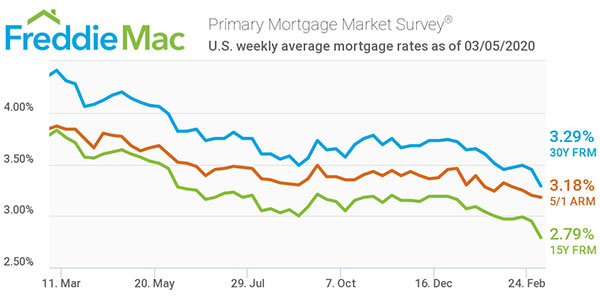This means that as monetary institutions went into the marketplace to lend money to house owners and ended up being the servicers of those loans, they were also able to create brand-new markets for securities (such as an MBS or CDO), and benefited at every action of the procedure by collecting fees for each transaction.
By 2006, more than half of the largest financial firms in the country were included in the nonconventional MBS market. About 45 percent of the largest firms had a large market share in three or 4 nonconventional loan market functions (originating, underwriting, MBS issuance, and servicing). As revealed in Figure 1, by 2007, almost all came from home mortgages (both standard and subprime) were securitized.
For instance, by the summer of 2007, UBS kept $50 billion of high-risk MBS or CDO securities, Citigroup $43 billion, Merrill Lynch $32 billion, and Morgan Stanley $11 billion. wfg ranking Considering that these institutions were producing and purchasing risky loans, they were thus exceptionally vulnerable when housing prices dropped and foreclosures increased in 2007.
In a 2015 working paper, Fligstein and co-author Alexander Roehrkasse (doctoral candidate at UC Berkeley)3 examine the reasons for fraud in the mortgage securitization market throughout the financial crisis. Deceptive activity leading up to the marketplace crash was prevalent: home loan begetters frequently tricked debtors about loan terms and eligibility requirements, in some cases hiding details about the loan like add-ons or balloon payments.
Banks that created mortgage-backed securities frequently misrepresented the quality of loans. For example, a 2013 suit by the Justice Department and the U.S. Securities and Exchange Commission found that 40 percent of the underlying home loans stemmed and packaged into a security by Bank of America did not meet the bank's own underwriting standards.4 The authors take a look at predatory lending in mortgage stemming markets and securities scams in the mortgage-backed security issuance and underwriting markets.
The authors reveal that over half of the banks analyzed were engaged in extensive securities fraud and predatory financing: 32 of the 60 firmswhich include mortgage loan providers, business and investment banks, and savings and loan associationshave settled 43 predatory financing suits and 204 securities fraud suits, amounting to almost $80 billion in penalties and reparations.
Indicators on What Are Cpm Payments With Regards To Fixed Mortgages Rates You Should Know
A number of firms entered the mortgage market and increased competition, while nolan financial group at the exact same time, the pool of feasible debtors and refinancers began to decline rapidly. To increase the swimming pool, the authors argue that big firms motivated their begetters to engage in predatory loaning, often discovering debtors who would take on risky nonconventional loans with high rate of interest that would benefit the banks.
This permitted banks to continue increasing profits at a time when standard home mortgages were scarce. Companies with MBS issuers and underwriters were then compelled to misrepresent the quality of nonconventional mortgages, typically cutting them up into different slices or "tranches" that they could then pool into securities. Moreover, due to the fact that large firms like Lehman Brothers and Bear Stearns were taken part in multiple sectors of the MBS market, they had high incentives to misrepresent the quality of their home mortgages and securities at every point along the financing procedure, from originating and providing to underwriting the loan.
Collateralized debt responsibilities (CDO) numerous swimming pools of mortgage-backed securities (often low-rated by credit agencies); subject to ratings from credit rating firms to suggest danger$110 Conventional home loan a type of loan that is not part of a particular federal government program (FHA, VA, or USDA) however guaranteed by a personal lending institution or by Fannie Mae and Freddie Mac; normally repaired in its terms and rates for 15 or 30 years; normally comply with Fannie Mae and Freddie Mac's underwriting requirements and loan limits, such as 20% down and a credit score of 660 or above11 Mortgage-backed security (MBS) a bond backed by a swimming pool of mortgages that entitles the shareholder to part of the monthly payments made by the debtors; may include traditional or nonconventional mortgages; subject to ratings from credit ranking agencies to show danger12 Nonconventional mortgage government backed loans (FHA, VA, or USDA), Alt-A mortgages, subprime home loans, jumbo home mortgages, or home equity loans; not bought or protected by Fannie Mae, Freddie Mac, or the Federal Real Estate Finance Company13 Predatory lending imposing unreasonable and abusive loan terms on borrowers, typically through aggressive sales tactics; making the most of borrowers' lack of understanding of complex deals; outright deceptiveness14 Securities fraud actors misrepresent or keep information about mortgage-backed securities utilized by investors to make choices15 Subprime home mortgage a home mortgage with a B/C score from credit companies.
FOMC members set financial policy and have partial authority to control the U.S. banking system. Fligstein and his colleagues discover that FOMC members were avoided from seeing the oncoming crisis by their own assumptions about how the economy works utilizing the framework of macroeconomics. Their analysis of meeting transcripts expose that as real estate prices were quickly increasing, FOMC members repeatedly downplayed the seriousness of the real estate bubble.
The authors argue that the committee relied on the framework of macroeconomics to alleviate the severity of the approaching crisis, and to validate that markets were working reasonably (what metal is used to pay off mortgages during a reset). They note that many of the committee members had PhDs in Economics, and for that reason shared a set of assumptions about how the economy works and count on common tools to keep track of and manage market abnormalities.

46) - how does bank know you have mutiple fha mortgages. FOMC members saw the rate variations in the housing market as separate from what was taking place in the financial market, and presumed that the overall economic impact of the housing bubble would be restricted in scope, even after Lehman Brothers submitted for insolvency. In truth, Fligstein and associates argue that it was FOMC members' failure to see the connection in between the house-price bubble, the subprime home loan market, and the financial instruments used to package home loans into securities that led the FOMC to minimize the seriousness of the approaching crisis.
Get This Report about How Does The Trump Tax Plan Affect Housing Mortgages
This made it almost impossible for FOMC members to anticipate how a downturn in housing rates would affect the whole nationwide and international economy. When the mortgage market collapsed, it shocked the U.S. and worldwide economy. Had it not been for strong federal government intervention, U.S. employees and house owners would have experienced even higher losses.

Banks are as soon as again funding subprime loans, particularly in vehicle loans and bank loan.6 And banks are once again bundling nonconventional loans into mortgage-backed securities.7 More recently, President Trump rolled back a lot of the regulatory and reporting arrangements of the Dodd-Frank Wall Street Reform and Consumer Defense Act for small and medium-sized banks with less than $250 billion in possessions.8 LegislatorsRepublicans and Democrats alikeargued that much of the is wesley financial group legitimate Dodd-Frank arrangements were too constraining on smaller sized banks and were limiting economic development.9 This brand-new deregulatory action, coupled with the increase in risky loaning and investment practices, might produce the economic conditions all too familiar in the time duration leading up to the market crash.
g. consist of other backgrounds on the FOMC Reorganize employee settlement at banks to prevent incentivizing dangerous behavior, and increase regulation of brand-new monetary instruments Job regulators with understanding and keeping an eye on the competitive conditions and structural modifications in the monetary marketplace, especially under situations when firms may be pushed towards fraud in order to preserve earnings.